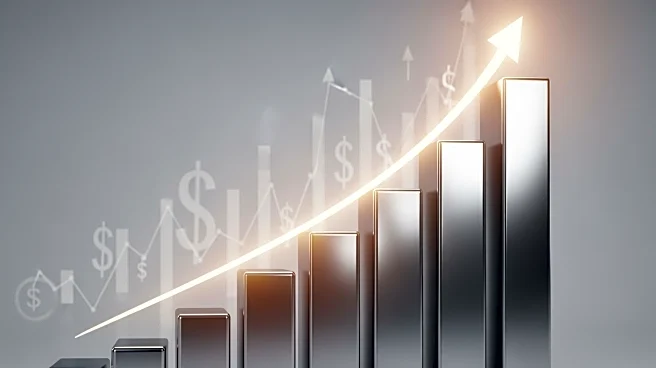What's Happening?
Gold prices have experienced a notable increase, with spot gold rising over 1% to approximately $3,984 per ounce. This recovery follows a decline earlier in the week as investors moved away from riskier
assets. The December COMEX futures also saw an uptick, settling at around $3,992.90. The rise in gold prices is attributed to a combination of factors, including a modest increase in U.S. private sector jobs reported by ADP, which showed a gain of 42,000 jobs in October. This data slightly reduced the likelihood of further rate cuts by the Federal Reserve, although it did not deter investors from seeking safe-haven assets like gold. The Federal Reserve recently cut interest rates by 25 basis points, but Chair Powell indicated that another cut in December is not guaranteed, which has tempered the enthusiasm for gold near the $4,000 mark. Despite recent volatility, gold remains up approximately 50% year-to-date, although it is still below its record high of around $4,381 set on October 20.
Why It's Important?
The increase in gold prices highlights the ongoing risk aversion among investors, who are seeking stability amid economic uncertainties. The Federal Reserve's cautious stance on future rate cuts adds to the complexity of the economic landscape, influencing investor behavior. The rise in gold prices can impact various stakeholders, including investors in gold-backed ETFs and central banks, which have been significant buyers of gold this year. The demand for gold as a safe-haven asset reflects broader concerns about the stability of global equities and the strength of the U.S. dollar. As gold prices rise, it could lead to increased interest from investors looking to hedge against potential economic downturns, thereby affecting market dynamics and investment strategies.
What's Next?
Looking ahead, the market will closely monitor upcoming economic data releases, particularly in light of the ongoing federal government shutdown, which has disrupted official data reporting. Investors will rely more heavily on private reports, such as those from ADP and PMI surveys, to gauge economic conditions. Additionally, market participants will pay attention to any further statements from the Federal Reserve regarding interest rate policies, as these could influence gold prices. The performance of the U.S. dollar and global equity markets will also play a crucial role in determining the future trajectory of gold prices. Continued demand from ETFs and central banks will be key factors to watch, as they have been instrumental in supporting gold prices throughout the year.













